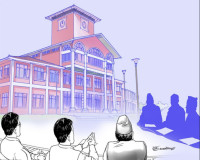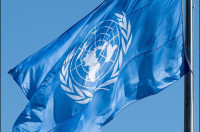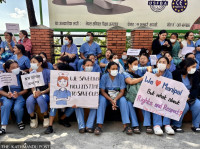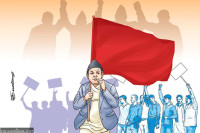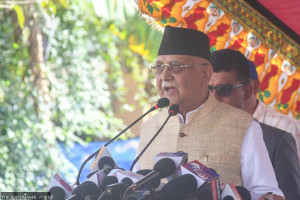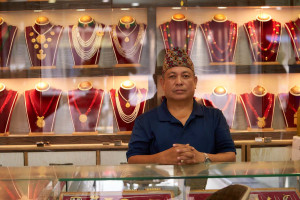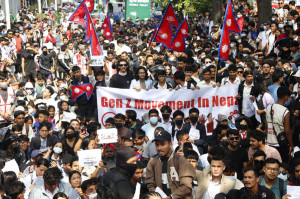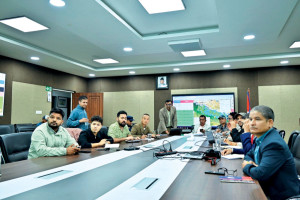Opinion
Wait for me
Nepal’s higher education woes have prompted a student exodus to faraway lands
Umesh Raj Regmi
The number of Nepali students opting for foreign degrees has been increasing every year, and today they are among the 10 largest populations of foreign students in Australia, Japan, India and New Zealand. Most Nepali students with proven academic track records dream of earning a foreign degree. The mushrooming number of education consultancies in Kathmandu and other major cities, test preparation centres, difficulty in getting test-taking dates from the British Council and the volume of no-objection letters issued by the Ministry of Education are proof of this trend. The reasons behind the rising fad of studying abroad, its direct and indirect impact on the nation’s economy, educational products and the psychology of students and parents are matters of serious concern.
Numeric indicator
According to the Department of Scholarship of the Ministry of Education, a total of 30,696 students received NOCs in the fiscal year 2014-15, compared to 28,126 in the previous year. Foreign education consultants believe that around 80 percent of those receiving the NOC leave the country. Ministry officials say that a liberal visa policy adopted by Australia and the UK, and a growing attraction among students for universities in Japan and the US led to the rise. The emergence of new academic destinations like Malaysia also contributed to the growth. Inundated with applications for NOCs, the ministry doubled the staff strength at the department last year. In 2014-15, Japan knocked off Australia from the top position with 9,363 NOCs against 8,692 NOCs. In the previous year, 11,000 students had received NOCs to study Down Under.
The Nepali market is set for further growth. The British Council estimates the country will be among the 10 fastest growing markets in the 18-22-year-old age bracket for the next nine years. That 18-22 age bracket is expected to expand by 787,000 persons by 2024, suggesting that there may not be sufficient university places to meet demand. Students mostly go abroad to study IT, computer, management and technical subjects. The flow of medical students to Bangladesh and India is also significant. The swelling exodus has led to a rise in revenue for the Education Ministry, which collected Rs56.22 million this year. Nepali students spent Rs1.8 billion in foreign countries during the same period.
Reasons for the rise
Students remain hopeful of staying abroad for study and research in different sectors. Moreover, their next ambition is to find work matching their field of study. A good job and a good salary are the central attraction for the new generation of students. Besides, students apply to foreign educational institutions due to the country’s political instability, lack of infrastructure and few job opportunities. Educational experts believe that the perception of foreign degrees as a prestige symbol and the failure of domestic universities to maintain quality are the two prime factors for the outflow. Broadly, potential students prefer to study abroad for quality education. Quality refers to a good faculty, reformed curricula, resources, external examiner in student assessment, competition, teacher-student ratio, instructional materials, practical education, a universally accepted degree and a friendly environment. It is also linked to employment opportunities after earning a degree. Hence, low quality education in Nepal is one of the push factors while quality education in the destination country is a major pull factor.
Moreover, peer pressure, student’s desire, parents’ psychology, advertisement and social media coverage are also causative factors for the rising number of foreign study candidates in the country. Similarly, traditional examination system, uncontrolled enrolment in various faculties and rapid privatisation in the educational sector have made prospective students think differently. Nepali university authorities are not in a state to convince parents and students that they will provide quality education and follow the university calendar. Since the educational sector should serve as a model in society, the embezzlement of university funds will create misunderstanding and negative feelings in society.
As a result, universities have lost the trust of the people. It is clear that plans, policies, programmes, acts, budgets and speeches have placed stress on education quality as the main agenda. However, the scenario tends to be different in practice. Because of the politicisation in education, students from lower middle income families still go to India, while those from middle and higher income families migrate to foreign countries for higher education.
Thinking ahead
It is high time we thought of turning Nepal into an educational destination for foreign students. Local colleges and universities hold great potential to attract foreign students, especially from the Saarc region, if they can improve their quality because of Nepal’s natural beauty and pleasant climate. The current trend of going to foreign countries is not going to change unless academic excellence is ensured in the country. It can be proudly said that Tribhuvan University (TU) medical college at Maharajgunj and the Engineering College at Pulchok are providing quality education. Their graduates are able to compete in the global market.
There are more than 70 private colleges in Nepal that are affiliated to foreign universities. They are trying to provide quality education to Nepali students. For example, some talented Nepali A-level students have achieved the highest marks globally. Many Nepali students have performed well in foreign universities because of the quality education they received here. Kathmandu University (KU) also has a reputation for providing quality education, though it charges relatively higher fees and enrols not more than 5,000 students. Likewise, many private and public academic institutions in Nepal are committed to providing quality education. These facts point to the educational strength and possibilities here. What is most important is that there should be no political intervention in education. The main objective of universities in Nepal should be to develop skilled human resources by imparting internationally competitive education. The higher education sector should always aim to create a skilled and knowledgeable workforce in the country.
Regmi is associated with the Nepal Youth Foundation




 13.12°C Kathmandu
13.12°C Kathmandu
